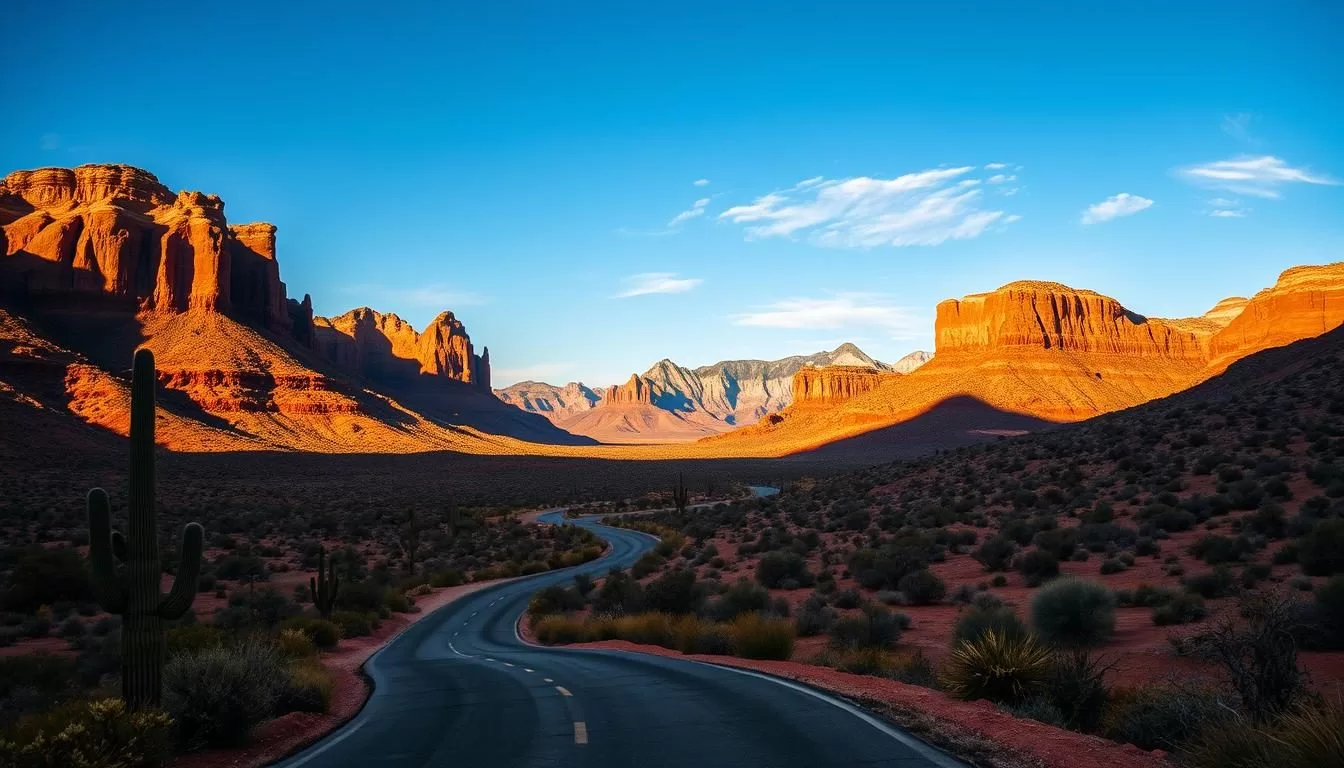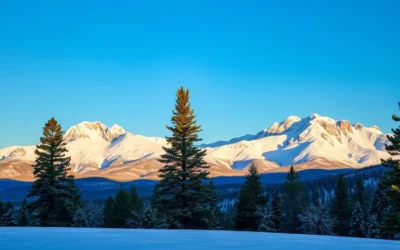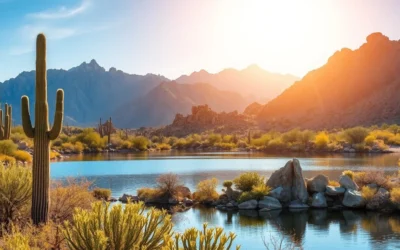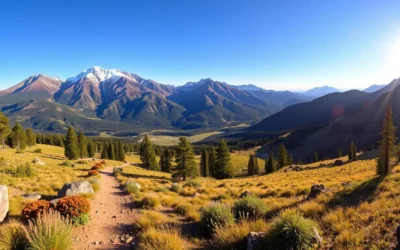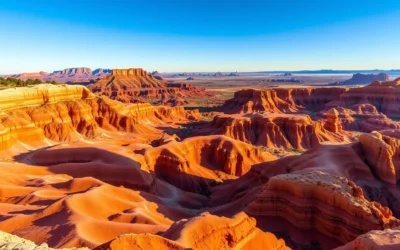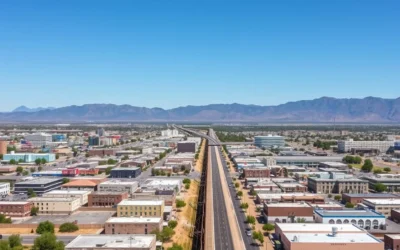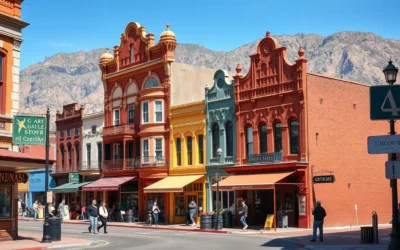✓ Accommodations ✓ Flights ✓ Rental Cars ✓ Tours & Activities
Imagine a place where the weather is always just right, no matter the time of year. Welcome to Arizona, a state that boasts diverse climate zones, making it an ideal destination for travelers seeking a weather-savvy trip. With its unique blend of natural beauty, outdoor adventure, and cultural experiences, Arizona is a year-round destination that caters to a wide range of preferences.
You’ll discover that Arizona’s geography creates multiple microclimates, allowing you to experience different seasons just by driving a few hours in any direction. Whether you’re looking to escape the desert heat of Phoenix and Tucson or enjoy the cooler mountain climates of Flagstaff and Sedona, Arizona has something for everyone. With over 300 days of sunshine per year, it’s one of America’s sunniest destinations, perfect for outdoor enthusiasts.
Understanding Arizona’s Diverse Climate Zones
From the arid desert landscapes of the south to the pine forests of the north, Arizona’s climate zones offer a unique experience. The state’s diverse geography creates a variety of climates, each with its own characteristics and attractions.
The Valley of the Sun: Phoenix and Scottsdale
The Phoenix area, known as the Valley of the Sun, experiences a desert climate with very hot summers and mild winters. Temperatures in the summer often reach over 100°F, while winter temperatures are usually in the 60s and 70s.
Southern Arizona: Tucson and the Desert
Tucson and the surrounding desert area have a similar desert climate to Phoenix but with some variations due to its slightly higher elevation. The city‘s desert landscape is dotted with saguaro cacti, and the weather is generally sunny year-round.
Northern Arizona: Sedona and Flagstaff
Northern Arizona, including Sedona and Flagstaff, has a distinctly different climate due to its higher elevation. Sedona’s best temperatures are from March to June and September to November. Flagstaff, at around 7,000 feet, experiences a four-season climate with snow in the winter.
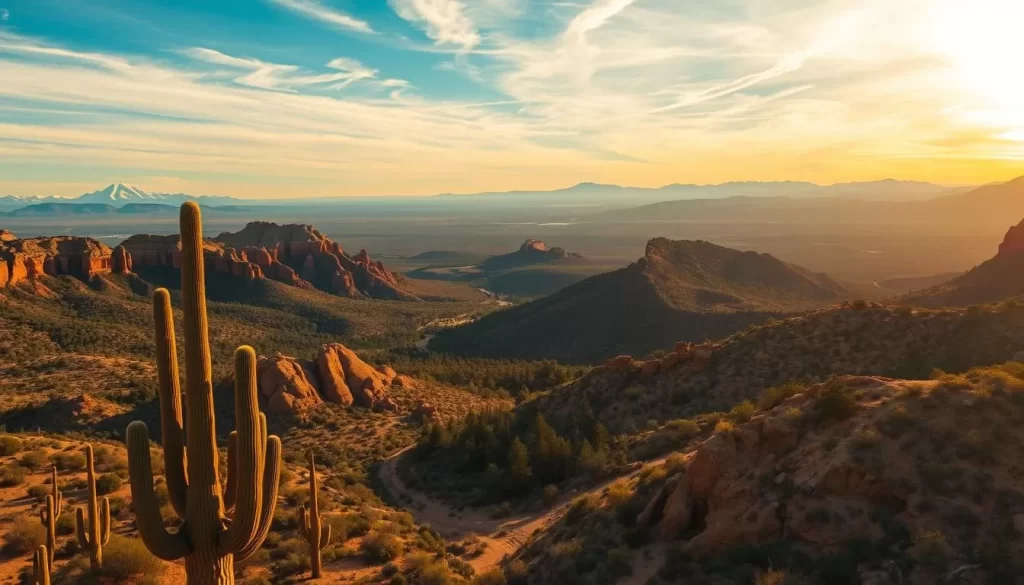
| Region | Climate Characteristics | Elevation |
|---|---|---|
| Phoenix/Scottsdale | Desert climate, hot summers, mild winters | Low elevation |
| Tucson | Desert climate, slightly cooler than Phoenix | Moderate elevation |
| Sedona | Mild climate, good for spring and fall visits | 4,500 feet |
| Flagstaff | Four-season climate, snowy winters | 7,000 feet |
Winter Wonderland: December Through February
Winter in Arizona is a season of contrasts, with snowy mountain resorts and warm desert landscapes existing side by side. This diversity makes Arizona an attractive destination for travelers seeking varied winter experiences.
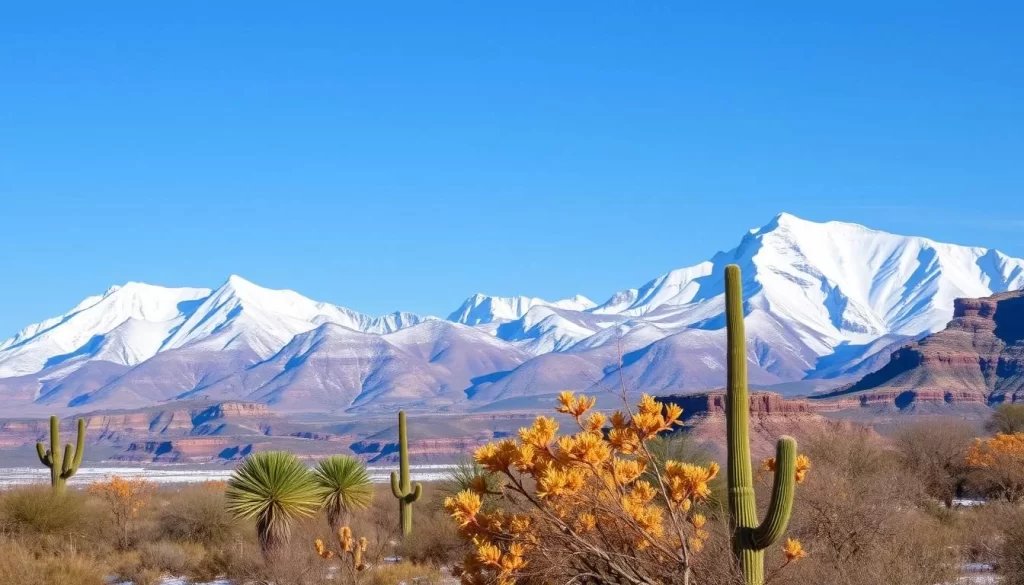
Perfect Weather for Desert Exploration
The desert regions of Arizona, including Phoenix and Tucson, enjoy mild winters, making them perfect for outdoor activities like hiking and exploring. The comfortable temperatures allow visitors to fully appreciate the natural beauty of the desert landscapes.
The Snowbird Season in Southern Arizona
Winter is a peak season for “snowbirds” in Southern Arizona, as people from colder climates flock to the region to escape harsh winter conditions. This influx of visitors contributes to the local economy and creates a lively atmosphere in towns like Tucson.
Winter Sports in Northern Arizona
Northern Arizona offers a winter sports enthusiast’s paradise, with destinations like Flagstaff providing access to skiing, snowboarding, and other snow-based activities. The Arizona Snowbowl, just 14 miles from downtown Flagstaff, is a popular spot for skiing and snowboarding, with the added bonus of breathtaking views of the Grand Canyon and surrounding desert landscapes.
With its diverse climate zones, Arizona can cater to a wide range of preferences during the winter months, from those seeking sun and warmth to those looking for snow and winter sports.
Spring Bloom: March Through May
March through May is a fantastic period to experience Arizona’s pleasant spring climate and diverse activities. As the state transitions from winter to spring, the weather becomes ideal for outdoor adventures and cultural events.
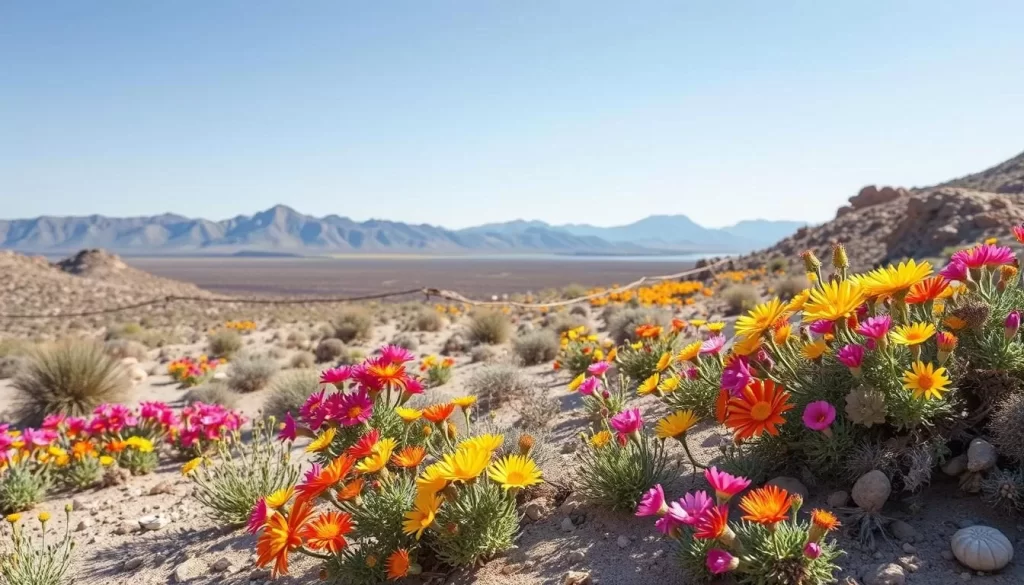
Desert Wildflower Season
One of the highlights of Arizona’s spring is the desert wildflower season. Depending on weather conditions, the desert can be painted with a variety of colors as wildflowers bloom. Popular spots for viewing these natural wonders include the Saguaro National Park and Organ Pipe Cactus National Monument.
Guided wildflower hikes are a great way to experience this phenomenon, offering insights into the unique flora of the Sonoran Desert.
Mild Temperatures Across the State
Spring brings mild and pleasant temperatures across Arizona, making it an ideal time for outdoor activities. Daytime temperatures are warm but not hot, while evenings are cool, creating perfect conditions for hiking, biking, and exploring the state’s natural beauty.
From the desert landscapes of Phoenix and Tucson to the forests of Flagstaff, the comfortable weather allows visitors to enjoy a wide range of activities without the extreme heat of summer.
Spring Events and Festivals
Arizona is known for its vibrant cultural scene, and spring is a great time to experience it. The Cactus League Spring Training is a major draw for baseball fans, with 15 MLB teams training in the Phoenix area. Other notable events include the Scottsdale Arts Festival and Tucson Festival of Books, showcasing the state’s rich cultural heritage.
The Arizona Renaissance Festival, held near Apache Junction, is another spring highlight, offering a medieval-themed experience with entertainment, crafts, and food.
Summer Strategies: June Through August
If you’re planning to visit Arizona during the summer, you’re likely looking for ways to beat the heat and make the most of your trip. Despite the high temperatures, there are numerous strategies to enjoy Arizona’s summer fun.
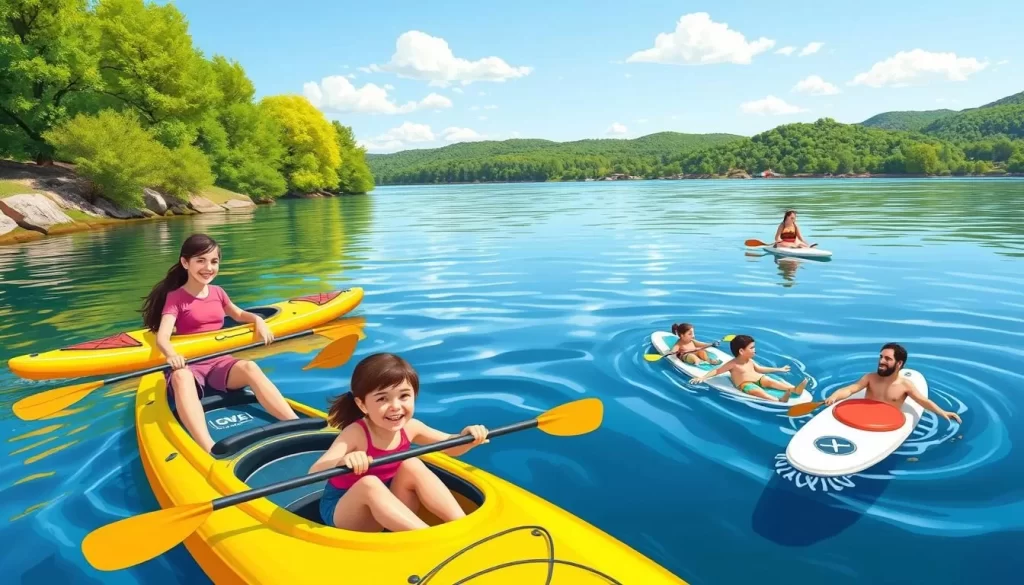
Early Morning Adventures in the Desert
One of the best ways to experience Arizona’s desert landscape during the summer is by embarking on early morning adventures. The desert is particularly beautiful during this time, with mild temperatures and a serene atmosphere. You can explore the desert trails, enjoy a hike, or simply take a leisurely walk.
Escaping the Heat in Northern Arizona
If the desert heat is too much, consider escaping to Northern Arizona, where the temperatures are significantly cooler. Places like Sedona and Flagstaff offer a cool retreat with their pine forests and mountainous landscapes. You can enjoy outdoor activities like hiking, biking, or simply enjoying the scenic views.
Water Activities and Indoor Attractions
Arizona is not just about desert landscapes; it also offers a variety of water-based fun and activities. You can enjoy rafting on the Colorado River, tubing down the Salt River, or engaging in boating and jet skiing at lakes like Lake Pleasant or Lake Powell. For those preferring indoor activities, attractions like the Desert Botanical Garden, Heard Museum, and Phoenix Zoo are great places to visit.
Arizona, United States: Best Months for a Weather-Savvy Trip
To make the most of your Arizona adventure, it’s crucial to consider the best time to visit based on weather and crowds. Arizona’s diverse regions offer various experiences throughout the year, making it a versatile destination for different types of travelers.
Weather Patterns by Region
Arizona’s climate varies significantly across its regions. The southern part of the state, including Phoenix and Tucson, experiences a desert climate with very hot summers and mild winters. In contrast, Northern Arizona, with areas like Flagstaff, has a mountainous climate with cold winters and mild summers. Understanding these regional weather patterns is key to planning your trip.
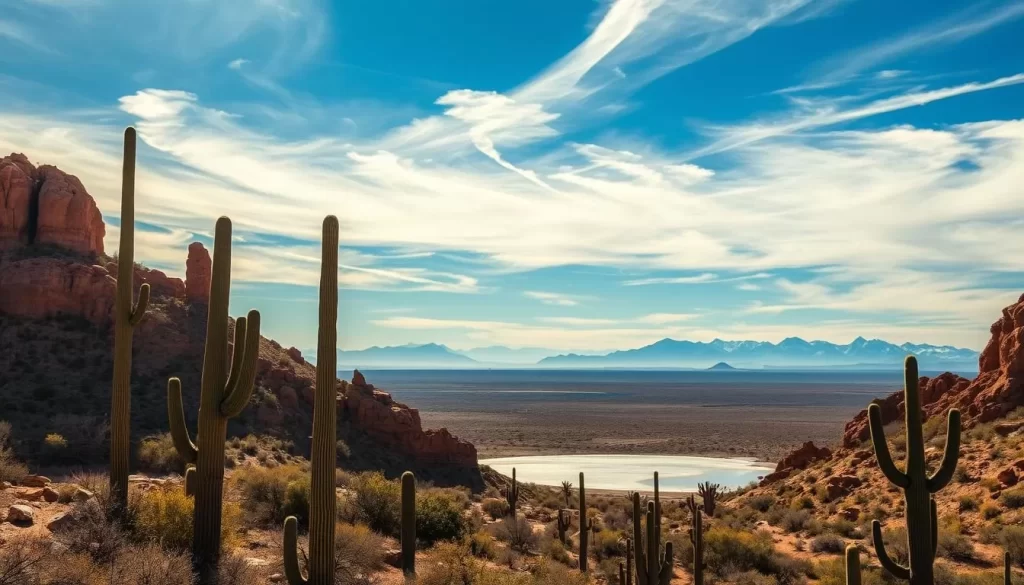
Balancing Weather Preferences with Activities
The peak tourist season in Phoenix is during winter and spring, offering great weather for outdoor activities. However, this period also attracts large crowds and higher prices. If you prefer milder weather and don’t mind the crowds, this could be the ideal time for you. On the other hand, if you’re looking for a more serene experience, consider visiting during the shoulder season.
Crowd Levels Throughout the Year
Crowd levels in Arizona vary significantly throughout the year and across different regions. While Southern Arizona, including Phoenix and Tucson, peaks in winter due to the “snowbird” phenomenon, Northern Arizona sees its peak in summer. Major events like Spring Training baseball and the Phoenix Open golf tournament also draw large crowds. Planning around these events can help you avoid the crowds and make the most of your visit.
By understanding the seasonal crowd patterns and weather, you can choose the best time to visit Arizona based on your preferences.
Monsoon Season: What to Expect from June to September
The monsoon season in Arizona is a force to be reckoned with, transforming the desert into a dynamic landscape of weather extremes. This period, which spans from June to September, brings a unique blend of drama and beauty to the Arizona landscape.
The Beauty and Drama of Desert Storms
Desert storms during the monsoon season are known for their intensity and visual impact. The dramatic skies and lighting conditions create a spectacle that is both awe-inspiring and humbling. In the past, there have been instances where the rain has been quite heavy; for example, in 1911, Phoenix experienced 4.98 inches of rain in a 24-hour period in July. The storms can be so powerful that they produce microbursts with winds over 100 mph.
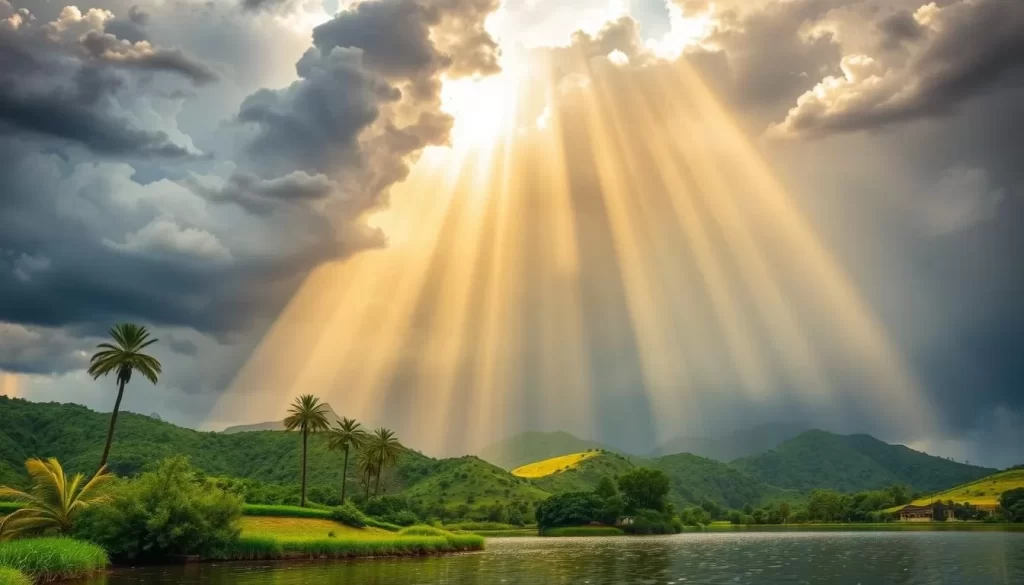
Safety Tips During Monsoon Season
While the monsoon season is a remarkable experience, it requires caution. To ensure your adventure is safe, be aware of the potential dangers. Microbursts can be particularly hazardous, causing damage and disruption. It’s essential to stay informed about weather conditions and follow safety guidelines when venturing out during this time. If you encounter a storm, seek shelter immediately and avoid being in open areas or near tall objects.
Photography Opportunities in Changing Weather
The monsoon season offers unparalleled photography opportunities. The changing weather conditions create dramatic skies, with the potential to capture stunning images of lightning, dust storms, and rainbows. To make the most of this, consider visiting elevated areas that provide panoramic views of the approaching weather systems. The unique light conditions can transform familiar landscapes, such as Sedona’s red rocks, into otherworldly scenes. When photographing, prioritize your safety while capturing the raw power and beauty of the storms.
- Capture the dramatic skies and lighting conditions.
- Photograph lightning and dust storms.
- Take advantage of the vibrant rainbows that follow monsoon showers.
- Use elevated vantage points for panoramic views.
- Experiment with the unique light conditions to create striking images.
During the monsoon season, the rain brings life to the desert, and the weather becomes a central aspect of the landscape. This season is a unique time to experience Arizona’s natural beauty.
Fall Splendor: September Through November
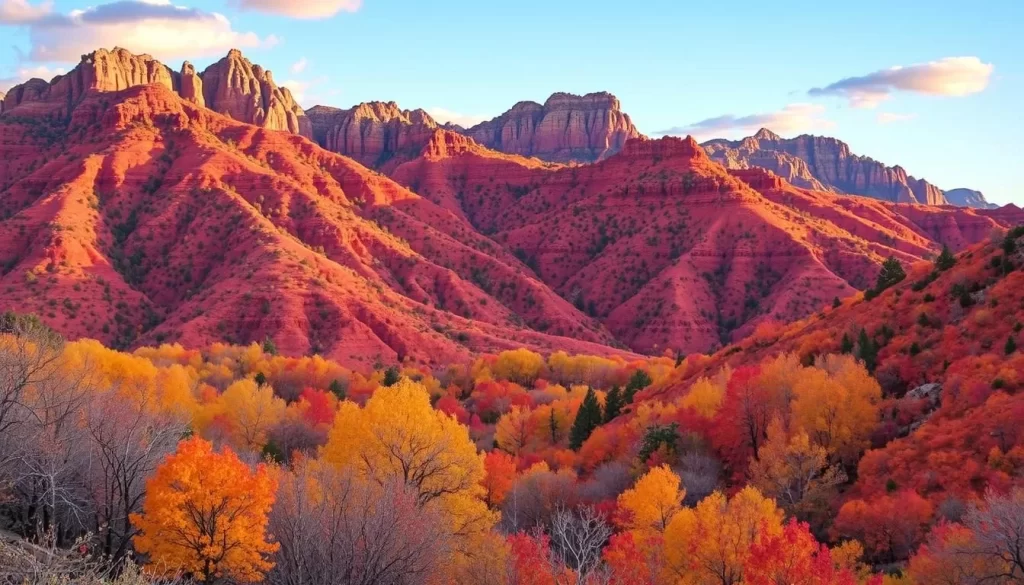
As the heat dissipates, Arizona’s fall season brings a mix of cultural events, outdoor activities, and breathtaking landscapes. You can enjoy the pleasant weather while exploring the state’s diverse regions.
Cooling Temperatures in the Desert
The desert landscapes of Arizona start to cool down during the fall, making it an ideal time for outdoor adventures. Pleasant temperatures allow you to explore the natural beauty of the state without the intense summer heat.
Autumn Colors in Northern Arizona
Northern Arizona transforms into a picturesque landscape with the changing foliage. Places like Sedona and Flagstaff offer stunning views of autumn colors, making it a perfect destination for nature lovers and photographers.
Fall Festivals and Harvest Events
Fall in Arizona is full of exciting events and festivals. You can experience the SanTan Oktoberfest in September, which is a hit among beer lovers and culture fans. The Arizona Restaurant Week also takes place in September, highlighting the city’s food scene with over 100 restaurants offering special deals.
Other top fall events include the Arizona State Fair and the Arizona Taco Festival. These festivals offer food, fun, and family activities, providing a great way to dive into local culture and enjoy the fall weather.
You’ll discover Arizona’s vibrant calendar of fall festivals, including harvest celebrations, cultural events, and food-focused gatherings across the state. Signature events like the Arizona State Fair, Tucson Meet Yourself cultural festival, and various Oktoberfest celebrations take advantage of the pleasant fall weather.
Best Months for Arizona’s Top Attractions
Arizona’s diverse landscapes and attractions make it a year-round destination, but knowing the optimal visit times can enhance your adventure.
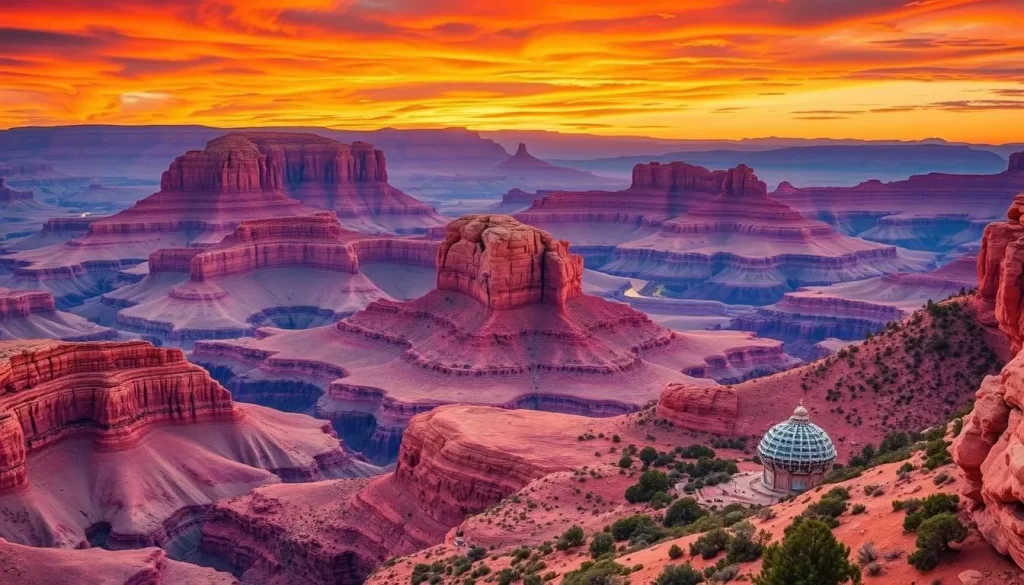
Grand Canyon: Optimal Visiting Times
The Grand Canyon is one of Arizona’s most iconic natural wonders. The best time to visit is from September to November or from March to May, when the weather is mild and comfortable for hiking and exploring. These periods offer the best balance of pleasant temperatures and smaller crowds.
During the summer, the heat can be intense, while winters can be cold, especially in the early morning and late evening. If you’re planning to hike down into the canyon, consider the temperature and your physical condition carefully.
Sedona’s Red Rocks: Weather Considerations
Sedona is renowned for its red rock formations and vibrant art scene. The best time to visit Sedona is during the spring (March to May) and fall (September to November), when the weather is mild and conducive to outdoor activities like hiking and biking.
Summer can be hot, but it’s a great time for enjoying the area’s many festivals and events. Winters are generally mild, making it a good time for those who prefer fewer tourists.
Monument Valley and Antelope Canyon: Seasonal Guide
Monument Valley and Antelope Canyon are iconic Navajo Nation attractions. The best time to visit these sites is from March to October, when the sun is high enough to create the famous light beams in Upper Antelope Canyon.
Visiting during the shoulder season (April-May or September-October) can help you avoid the peak tourist season crowds. Be mindful of the seasonal factors that affect access, including road conditions and tour availability.
Budget-Friendly Travel Timing
You can enjoy a budget-friendly trip to Arizona by understanding the best times to travel. The state’s diverse climate zones mean that there’s always a good time to visit, depending on your preferences and budget.
Off-Season Deals and Discounts
Traveling during the off-season can lead to significant savings. Midweek flights, especially on Tuesdays and Wednesdays, tend to be cheaper due to lower demand. Airlines typically release their cheapest fares several months before departure, so booking in advance is crucial. By using these strategies, you can enjoy the Valley of the Sun without overspending.
Shoulder Season: The Perfect Balance
The shoulder season, which includes periods like March to May and September to November, offers a great balance between comfortable weather and lower prices. Accommodation rates tend to be lower during these periods, even in popular areas. You’ll find that many attractions and activities are less crowded, making for a more enjoyable experience.
Saving on Accommodations and Activities
To save on accommodations, consider booking midweek stays when rates are typically lower. You can also explore value-oriented lodging options like vacation rentals, boutique properties, and unique accommodations such as glamping. For activities, look into combination tickets and annual passes, especially if you plan to visit multiple national parks. Taking advantage of free attraction days and happy hour specials can also help you save.
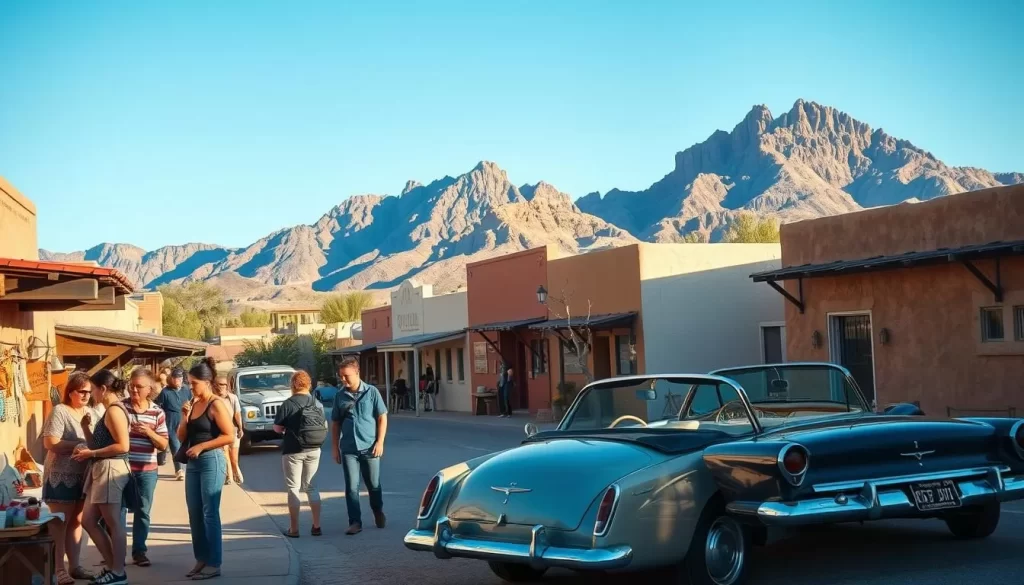
Conclusion
Arizona’s climate varies significantly across different regions and seasons, allowing you to tailor your trip according to your interests. Whether you’re looking for the fun and excitement of outdoor activities or a relaxing getaway, understanding the best time to visit is crucial.
The state’s diverse climate zones mean that you can enjoy pleasant weather during different times of the year. For instance, winter and spring are ideal for outdoor exploration, while summer offers a more budget-friendly option despite the heat. In fall, you can enjoy mild temperatures and fewer tourists, making it an excellent destination for those seeking a balanced experience.
By considering your preferences for weather, budget, and activities, you can choose the perfect time for your travel to Arizona. Don’t forget to pack accordingly, bringing protection from the sun and staying hydrated, to ensure a enjoyable journey.
Ultimately, Arizona offers a unique experience throughout the year, making it a versatile destination for all kinds of travelers. With this guide, you’re now equipped to plan your trip to Arizona with confidence, making the most of your time and preferences.
The above is subject to change.
Check back often to TRAVEL.COM for the latest travel tips and deals.
